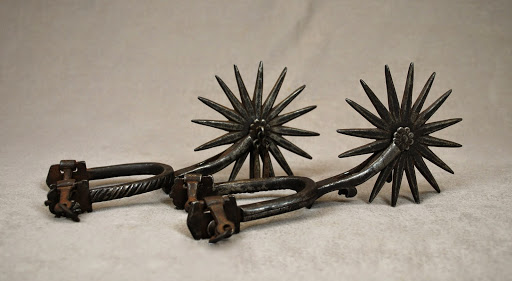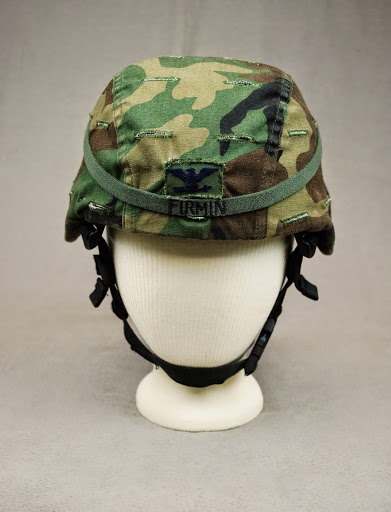Texas history does not begin with its declaration of independence from Mexico 1836. Long before this revolt, indigenous people and Hispanic settlers lived in the vast region called New Spain. Spain’s conquest of Mexico in 1519 continued until Mexico declared independence from Spain in 1810. Then, what was known as Tejas to the inhabitants, became part of Mexico.
Spain’s European blood was not only spilled in the bloody conquest of Mexico but mixed with Mexico’s indigenous tribes, resulting in a people called mestizos. Mexicans are inheritors of this extraordinary human fusion.
Now, the University of Texas at San Antonio Institute of Texan Cultures museum is showcasing 500 years of Hispanic Texas history in a permanent exhibit. Aptly titled “Los Tejanos,” the exhibit opens May 15 at ITC’s main campus in downtown San Antonio.
This exhibit focuses on how Tejanos lived, why certain events happened, and how they helped shape Texas. One example of how they helped to shape Texas is the introduction of cattle ranching. This Tejano way of life later blossomed into a leading Texas industry.

Spurs – Typical of 1800s spurs used by Spanish vaqueros.
Organized within 2,000 square feet of space, the exhibit covers Spanish exploration and conquest, settlement led by Spanish priests and Spanish and Mexican settlers, wars with Indian tribes, and conflict resolution in the form of peace treaties.
Curators Lupita Barrera and Sarah Gould did more than construct a timeline identifying key events and individuals. They went beyond, because thousands of Tejanos lived in Texas before Stephen F. Austin arrived with Anglo settlers. So the twosome knew the true story of the contributions of “Los Tejanos” had to finally be told.
“This is a thematic approach to storytelling. We studied peer institutions, consulted experts, talked with members of the public, and we determined that the best way to present this story was thematically,” said Gould, ITC lead curatorial researcher.
Along with selected historic artifacts, visitors see a recreation of an 18th century ranch house. This illustrates the genesis of cattle ranching and the attendant lifestyle. Also, a modern kitchen serves as a backdrop for cultural encounters. Here, guests learn about the influences that led to the creation of delicious Tejano cuisine.
Meanwhile, a recreation of a 1930s city plaza illustrates cultural contributions in music, print and other media. In the plaza center, couples can be seen dancing while musicians play guitars and on accordions. The recreation of the city plaza is actually a colorful mural.

Considering 500 years of Tejano history, the saga of a group of Hispanics born on Texas soil before Texas statehood, Barrera and Gould rose to the challenge of condensing 500 years of information and artifacts into a single exhibit.
“We’re looking at periods of time and the social conditions of each era. It’s about how the culture defines itself and interacts with others through time, said Barrera, ITC’s education and interpretation director.
A replica of a 1940s Texas classroom is one of five specific circumstances Tejanos faced after Texas became a state. School desks are filled with literature pointing up Tejanos’ struggle for civil rights and equality.
Among the papers in an adjacent area, visitors see how some Tejanos often escaped prejudice by enlisting in the United States military in hopes of earning a higher education and a better life.

Combat helmet – Belonging to USAF Col. (Ret.) Lisa Firmin. She is currently Associate Provost for Diversity and Recruitment at the University of Texas at San Antonio. At her retirement, she was the highest-ranking Latina in the U. S. Air Force. She commanded the expeditionary mission support group at Balad Air Base in Iraq during Operation Iraqi Freedom.
Segregation in Texas was not exclusive to African-Americans. Tejanos experienced their share of racism. Texas discrimination ran the gamut from education to jobs. Some older Tejanos have recounted that segregation even extended to cemeteries, where Tejanos were laid to rest away from their Anglo counterparts.
In hopes of dispelling erroneous myths and beliefs about Tejanos, the Barrera and Gould team also included a 20th century doctor’s office to illustrate that some Tejanos actually earned advanced degrees.

Doctor’s bag – belonging to Clotilde Garcia, a Corpus Christi physician. Garcia was one of the first Mexican-American women to practice medicine in Texas. She was the sister of Hector P. Garcia, founder of the American G.I. Forum. In 2008, the city of Corpus Christi named a public library in her honor.
The goal is to show that not all Tejanos were unskilled laborers who toiled in the fields. Nevertheless, attaining an advanced degree was not easy for many Tejanos. Indeed, some aspiring Tejano doctors were forced to leave Texas (due to discrimination) in order to complete their medical careers.
The “Los Tejanos” exhibit finally gives a voice to the thousands of Hispanics of Mexican, Spanish and Indian ancestry who lived and worked in Texas for centuries before the arrival of Stephen F. Austin and well in advance of Texas statehood.
“Culture, customs and traditions change. “Los Tejanos” is about how this culture changed, how it interacted with others, how it influenced others, and how this culture emerged in today’s form,” said Barrera.

Texas Ranger Sergeant (Ret.) Badge – Belonging to Ramiro “Ray” Martinez, a former Austin Police Department officer, Texas Ranger, and Justice of the Peace in New Braunfels, Texas. The Texas Rangers are an elite law enforcement body unique to Texas – no equivalent unit exists in the nation.
UTSA Institute of Texan Cultures is on the HemisFair Park campus, at 801 Cesar Chavez Blvd. near downtown San Antonio. ITC is within walking distance of the famous Alamo landmark and the River Walk. Regular hours are from 9 am to 5 pm Monday through Saturday and Noon to 5 pm Sundays.
Admission is $8 for adults (12 to 64) $7 for senior who are aged 65 plus, and $6 for children 3 to 11 years old. UTSA and Alamo College students are admitted for free. For more information call (210) 458-2300 or visit www.texancultures.com
Rosie Carbo is the Lifestyles Editor for Wandering Educators, and is a former newspaper reporter whose work has appeared in newspapers and magazines nationwide. Some of those publications include People magazine, The Dallas Morning News, The Houston Chronicle and San Antonio Express-News. Some of her features were redistributed by The Associated Press early in her career as an award-winning Texas journalist.
All photos courtesy and copyright University of Texas San Antonio Institute of Texan Cultures
